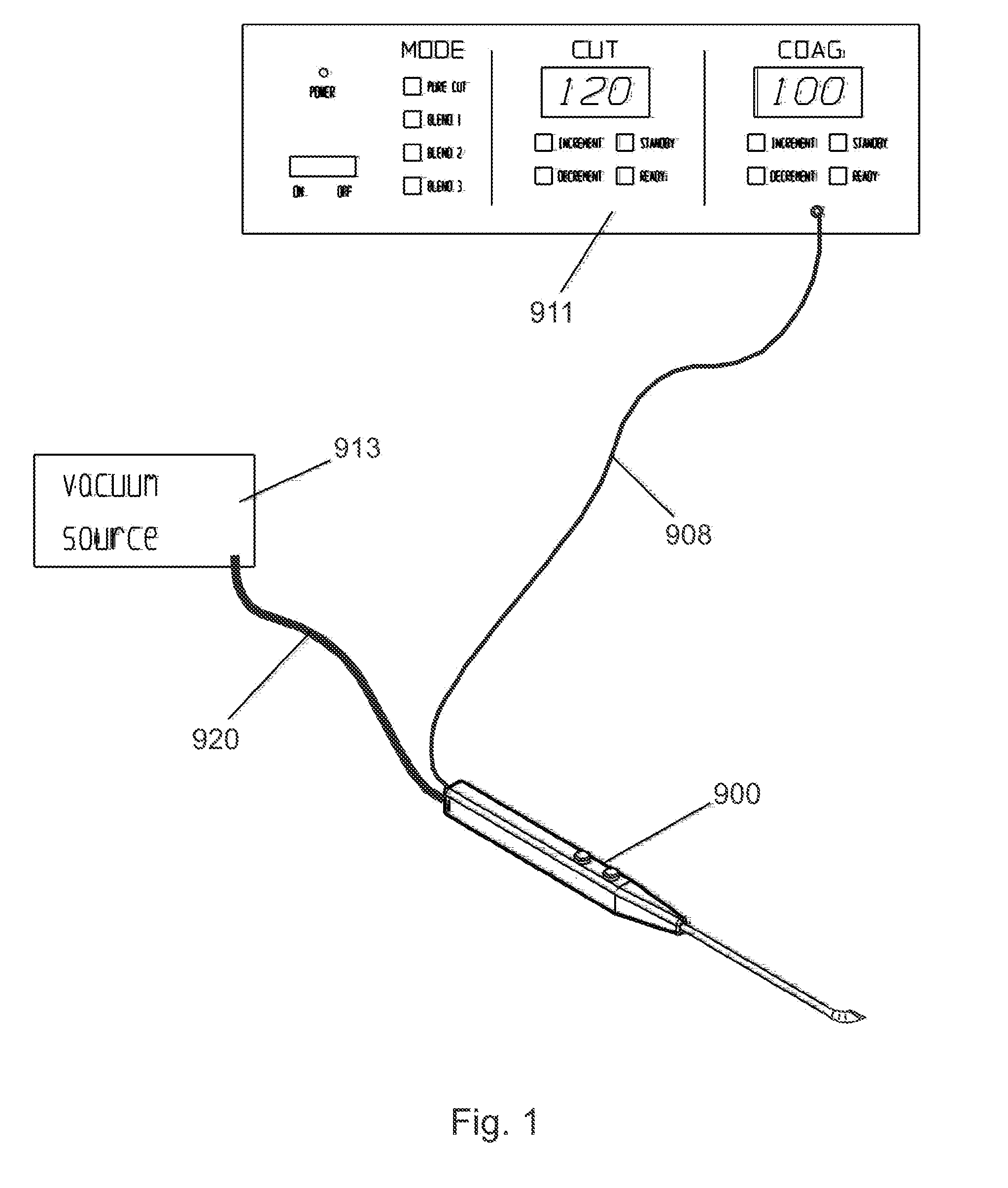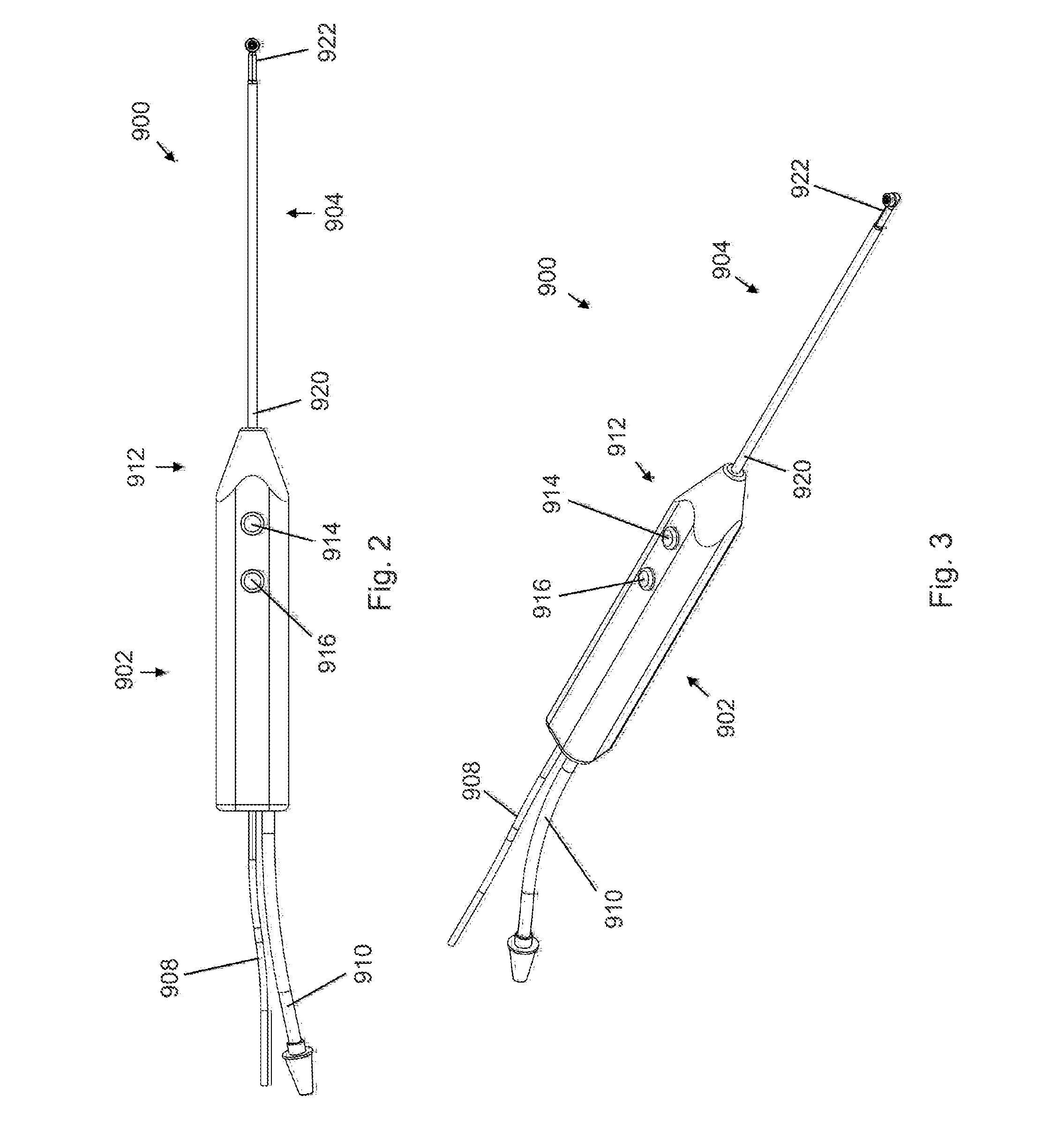Flexible electrosurgical ablation and aspiration electrode with beveled active surface
a flexible, active surface technology, applied in the field of electrosurgical ablation and aspiration ablation electrosurgical devices, can solve the problems of affecting the amount of power required for ablation, the conditions within the bubble become unfavorable for sparking, and the geometries are generally not efficient for accomplishing this task, etc., to achieve high efficiency, simple form, and low cost
- Summary
- Abstract
- Description
- Claims
- Application Information
AI Technical Summary
Benefits of technology
Problems solved by technology
Method used
Image
Examples
Embodiment Construction
[0107]The present invention constitutes a marked improvement in the field of electrosurgery, more particularly, to high efficiency surgical devices and methods which use radio frequency (RF) electrical power to vaporize and remove all or part of a tissue mass.
[0108]Although any methods and materials similar or equivalent to those described herein can be used in the practice or testing of embodiments of the present invention, the preferred methods, devices, and materials are now described. However, before the present materials and methods are described, it is to be understood that this invention is not limited to the particular compositions, methodologies or protocols herein described, as these may vary in accordance with routine experimentation and optimization. It is also to be understood that the terminology used in the description is for the purpose of describing the particular versions or embodiments only, and is not intended to limit the scope of the present invention which wil...
PUM
| Property | Measurement | Unit |
|---|---|---|
| temperature | aaaaa | aaaaa |
| angles | aaaaa | aaaaa |
| angle | aaaaa | aaaaa |
Abstract
Description
Claims
Application Information
 Login to View More
Login to View More - R&D
- Intellectual Property
- Life Sciences
- Materials
- Tech Scout
- Unparalleled Data Quality
- Higher Quality Content
- 60% Fewer Hallucinations
Browse by: Latest US Patents, China's latest patents, Technical Efficacy Thesaurus, Application Domain, Technology Topic, Popular Technical Reports.
© 2025 PatSnap. All rights reserved.Legal|Privacy policy|Modern Slavery Act Transparency Statement|Sitemap|About US| Contact US: help@patsnap.com



